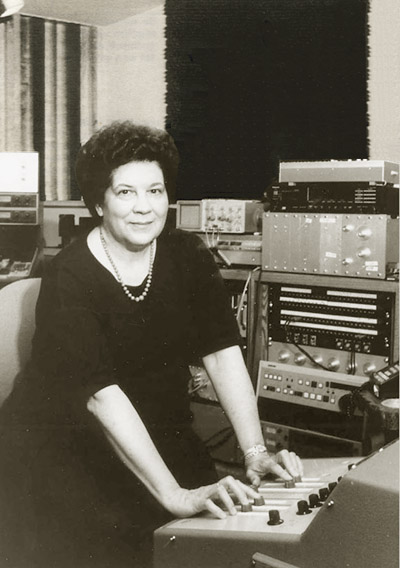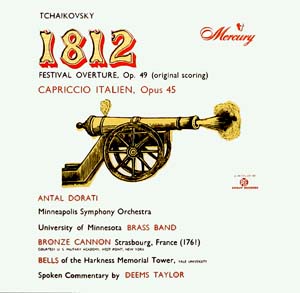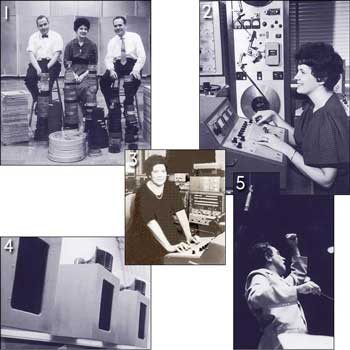Wilma Cozart Fine
March 29, 1927-September 21, 2009
A pioneering female record producer whose classical recordings for the Mercury label in the 1950s and 1960s are prized for their clarity, sonic robustness and emotional resonance.
Wilma Cozart Fine, the first important female record producer (and still a rarity in a field dominated by men), whose advanced recording techniques brought what New York Times critic Harold Thompson called “living presence” to classical recordings (and led to the Mercury label titling an entire, celebrated series “Living Presence”), died on September 21 at her home in Harrison, NY. She is survived by five sons, a brother, and four grandchildren. Her husband C. Robert Fine, an engineer at Mercury who brought his wife into the recording business, died in 1982.
Born in Aberdeen, MS, and raised in Fort Worth, TX, Mrs. Fine attended North Texas State University, where she studied music education and business administration, and took a job as personal secretary to Antal Dorati when he was conductor of the Dallas Symphony. When Dorati was hired by the Minneapolis Symphony, Mrs. Fine followed him, but soon after decided to move to New York. With a recommendation from Dorati, she was hired by Mercury in 195o and promoted to vice president 1954. Working with Bob Fine, who had a reputation as an innovative engineer, she helped develop recording techniques that were striking and unusual in their sonic presence, aiming to recreate in the listening environment the experience of the concert hall. One of their most spectacular and enduring productions remains 1954’s recording of Tchaikovsky’s “1812 Overture,” with Antal Dorati and the Minneapolis Symphony, that was realized as an aural extravaganza complete with thunderous blasts from West Point’s historic cannons and the tolling of giant bells as recorded in Yale University’s bell tower. The fines recorded the symphony with one microphone, a technique Bob Fine had used for years with small classical combos but never before with a symphonic orchestra. The “1812 Overture” album went Gold, one of only two classical albums in the decade to attain such certification.Later, when recording in stereo to 3-track tape, Mrs. Fine employed three omnidirectional microphones, to great sonic advantage. As she explained in a 1995 radio interview with Bruce Duffie (the transcript is now posted online at www.kcstudio.com), “With the Mercury records, you always hear the center, but it isn’t really there. It has been combined into the left and the right, and done in such a way that the illusion is complete all the way across the stage. In other words you don’t have a hole there. You have the winds sitting back where they would when the orchestra was in its normal seating on the stage. I try to recreate exactly what that microphone picked up at the time of the session. Sometimes it’s not always the same and also the acoustics of the hall determines how this works to a great extent. How close the mics are to each other is greatly influenced by the acoustics in the hall, so it’s certainly not an arbitrary thing.” In 1961, the Fines enhanced the three-mic stereo approach by using 35mm magnetic film in place of half-inch tape during recording, which effectively knocked out sound leaks and echoes while adding greater frequency range and transient response. The
Fines also mixed all channels of the recordings directly to a cutting lathe rather than to tape, thus eliminating extra hiss.
With the launch of the “Living Presence” classical series, Mrs. Fine took over recording director duties and continued in that position until her retirement in 1964. She came out of retirement in 1989 to oversee the transfer of the Living Presence series to CD, which gave her an opportunity to weigh in on the ongoing debate over digital versus analog sound. To Duffie she dismissed the entire argument as “false in concept,” asserting that the two cannot be compared.
Caption:Clockwise, from top left: (1) The Mercury legend was born of the efforts of a now-legendary triumvirate of C. Robert Fine (left), Wilma Cozart and Harold Lawrence. Mrs. Fine and Harold Lawrence were recording directors. Wilma extended the Mercury legend into the digital era and masterminded the CD and SACD reissues. In the other pictures, Wilma is seen working at the 3-to-2 channel console for LP productions (2) and posing at the Western Electric mixing console for the CD release (3). (4) shows the Mercury monitoring loudspeakers, Altec's Voice of the Theater. (5) Dorati conducting one of the Mercury sessions; overhead is a Telefunken U-47 omni-directional microphone.“The argument that CDs are better than LPs is not the question in my opinion,” she said. “The crux of the matter is, again, the original recording, because if you’re trying to judge a technology by the time it gets in the home, a lot of things could have affected it. If you said that you don’t think a CD is as good as an LP but you didn’t relate that to specific repertoire you could say that, or you could say a CD is better, but even then it’s not really valid. They aren’t played through the same chain, they’re not played through the same system. I do think that analog recording is the best thing there is; there’s no question about that in my mind. I think it’s absolutely wonderful, but I don’t think that it’s better when it gets to you in the home, because a lot of things happen, including what you’re playing it on at the time. The fact is that you are going to have some surface things, probably, when you play a record. If they didn’t happen before you opened the record, they will happen by the second time you play it or probably before you get through it the first time. One of the reasons I feel that Mercury CDs have the quality and the sound which they do is that they come from an analog source. The second thing is they are made for CDs as far as they can go through the change from tube equipment. No transistors. Those are two of the distinguishing influences with the sound and I’m very happy that they do come from analog originals.”
Asked by Duffie if she was pleased with her career, she answered enthusiastically. “Oh yes, I’ve had a wonderful time. I’m so fortunate to have been able to work with these wonderful artists over the years and know them, and to get to know first hand as much music as I do. You do learn it whenever you record it because you have to take it apart and put it back together from so many vantage points. I do love music with all my heart and wanted to work with it since I was a child. I consider myself really so fortunate to have had the privilege of doing that. I enjoy it just as much now as I did when I first started.”
Founder/Publisher/Editor: David McGee
Contributing Editors: Billy Altman, Laura Fissinger, Christopher Hill, Derk Richardson
Logo Design: John Mendelsohn (www.johnmendelsohn.com)
Website Design: Kieran McGee (www.kieranmcgee.com)
Staff Photographers: Audrey Harrod (Louisville, KY; www.flickr.com/audreyharrod), Alicia Zappier (New York)
E-mail: thebluegrassspecial@gmail.com
Mailing Address: David McGee, 201 W. 85 St.—5B, New York, NY 10024





